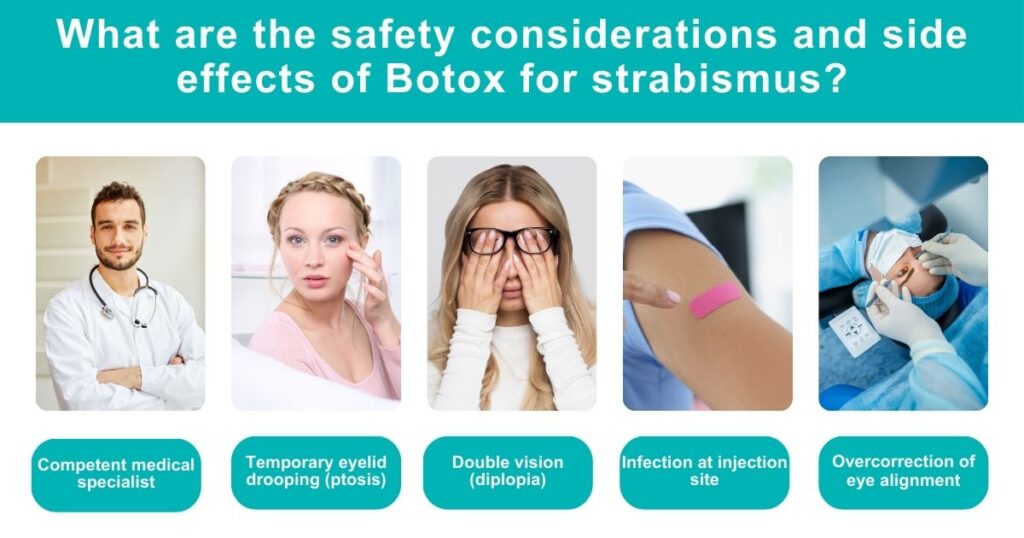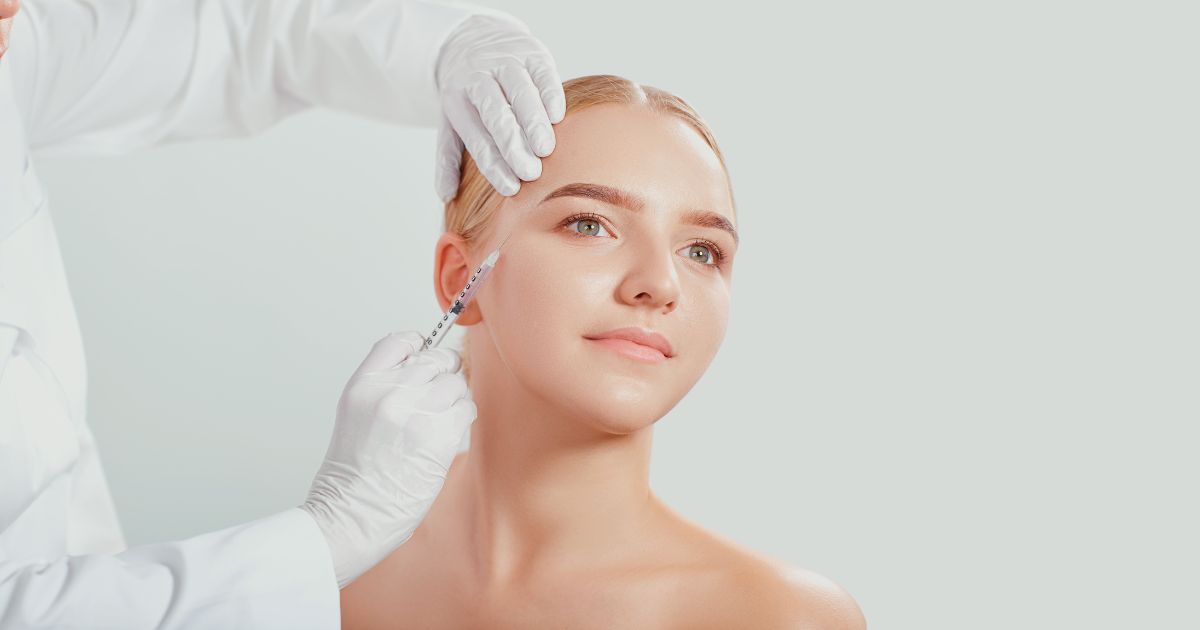Over the years, various methods have been suggested for treating cross-eyed or strabismus conditions. Among these, Botox for cross-eyed or strabismus has gained attention from patients and doctors as a possible treatment.
Strabismus or crossed eye is a vision disorder where the eyes do not align properly, causing them to point in different directions. The eyes can become tired and have trouble focusing because of this misalignment.
Strabismus affects children and adults with various causes, including genetics, eye muscle issues, nerve damage, and eye injuries. This piece will examine Botox for Cross-Eyed or strabismus and discuss its potential benefits and risks.
Understanding the Different Types of Botox for Cross-Eyed or Strabismus
Strabismus can be classified into several types based on the direction of the misaligned eye and the underlying cause:
Book A Consultation With Dr Tarek Bayazid
Top-rated Plastic Surgeon For Botox in Dubai
- Esotropia: The eye turns inward towards the nose.
- Exotropia: The eye turns outward away from the nose.
- Hypertropia: The eye turns upward.
- Hypotropia: The eye turns downward.
Several types of strabismus vary in frequency, muscles involved, and if the disorder occurs at birth.
Botox as a Treatment for Crossed Eyes
Botox is a neurotoxin produced by the bacteria Clostridium botulinum. Botox works by temporarily paralyzing the muscles into which it is administered, which can aid in the realignment of the eyes in situations of strabismus.
Botox is injected into one or more eye muscles to relax and allow stronger muscles to align the eye correctly.
The Science Behind Botox’s Mechanism of Action
Botox acts on the neuromuscular junction, which is the point where nerves meet muscles. Botox, a neurotoxin, reduces muscular activity after being injected into a muscle to prevent the body from producing acetylcholine.
When released by nerve cells, the neurotransmitter acetylcholine produces muscular contraction. By blocking the release of acetylcholine, Botox effectively weakens the targeted muscle, leading to its temporary paralysis.
In strabismus, this temporary paralysis can help relax overactive eye muscles, allowing the opposing muscles to align the eye better. This effect benefits patients with acute-onset strabismus or those with relatively mild misalignments.
Effectiveness of Botox for Cross-Eyed Patients
In several scientific investigations, Botox has successfully corrected strabismus, especially in cases of mild to moderate misalignment cases. Botox is often used as an initial treatment option, as it is less invasive than surgery and can provide temporary relief while patients explore other long-term solutions.
The following are some vital considerations about Botox and strabismus:
- Treatment with Botox is highly effective for acute strabismus brought on by an injury or sickness.
- Botox treatment for strabismus has a success rate of 50 to 80%, albeit this varies widely from patient to patient and muscle to muscle.
- Botox can be used as a diagnostic instrument to determine if surgical intervention is required, as it identifies the muscles responsible for the misalignment.
- Repeat Botox injections may be required to maintain the desirable eye alignment, as Botox’s effects typically last between three and six months.
Factors Influencing Botox for Cross-Eyed Treatment Success
Several factors affect how well Botox works for strabismus treatment.
The patient’s age
Younger patients may have more elastic and responsive eye muscles, improving treatment outcomes.
The type of strabismus
Those with acute-onset or mild strabismus may benefit more from Botox.
The specific eye muscles involved
Botox treatment success can vary depending on which eye muscles are targeted and the degree of muscle imbalance.
The experience of the administering physician
A skilled and experienced eye care professional is essential for optimal treatment results.
Safety and Side Effects of Botox for Cross-Eyed Strabismus
Botox is considered effective and safe for treating strabismus when administered by a competent medical specialist.
However, patients must be aware of unwanted effects, as with any medical treatment.
Some of the most common side effects include:
- Temporary drooping of the eyelid (ptosis)
- Double vision (diplopia)
- Overcorrection of the eye alignment
- Infection at the injection site
- Most side effects are temporary and resolve independently as the effects of Botox wear off. Consider your doctor’s advice about Botox therapy’s risks and benefits before deciding whether to get it.

Alternative Treatment Options for Strabismus
Botox may help treat strabismus in certain patients but is not the only choice.
Other treatment options include:
- Eye muscle surgery, which involves tightening or loosening specific eye muscles to improve alignment.
- Vision therapy is an exercise programme designed to improve eye strength and coordination without using intrusive techniques.
- Orthoptic exercises, prescribed by an eye care professional, aim to improve eye muscle control and coordination.
- Prism glasses use special lenses to shift the image in one eye, helping the eyes work together more effectively.
- Patching involves covering the stronger eye to encourage the weaker eye to work harder and improve strength.
To treat strabismus effectively, the individual patient’s condition must be assessed, as will the extent of the problem.
A thorough evaluation by an eye care professional is crucial to determine the most appropriate treatment plan.
Long-Term Outlook for Patients with Strabismus
The severity of strabismus, the treatment provided, and other factors can affect how patients perceive the disease.
Many patients experience significant eye alignment and function improvements following treatment, whether through Botox injections, surgery, or other non-surgical interventions.
Strabismus patients should schedule regular checkups with their eye doctors so that their condition may be monitored and any required alterations to their treatment programs can be done without delay.
Early intervention and consistent management can significantly improve the long-term outcomes for individuals with strabismus.
Botox can be a valuable tool in managing certain types of strabismus, offering a less invasive alternative to surgery and providing temporary relief for patients exploring other long-term solutions. Working closely with a skilled eye care specialist to establish the best course of action to improve your eye health and quality of life is highly recommended.
If you’re considering getting Botox for cross-eyed to correct your strabismus, don’t hesitate to contact Dr Tarek Aesthetics. Their expertise assures you they will provide the guidance and attention you need.
To request a quote for your treatment, visit their website and take the first step towards improving your eye alignment and enhancing your quality of life.








Related Posts